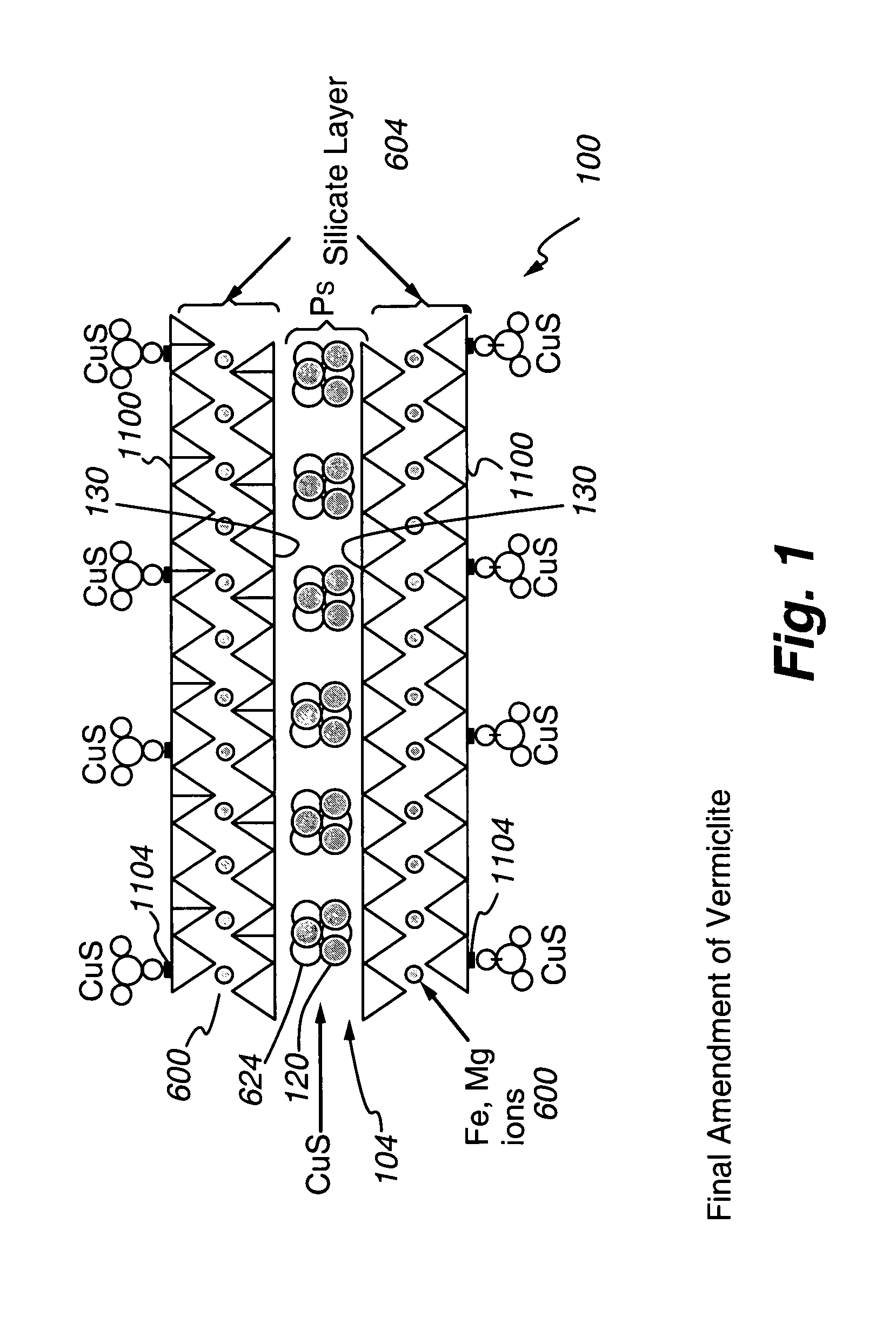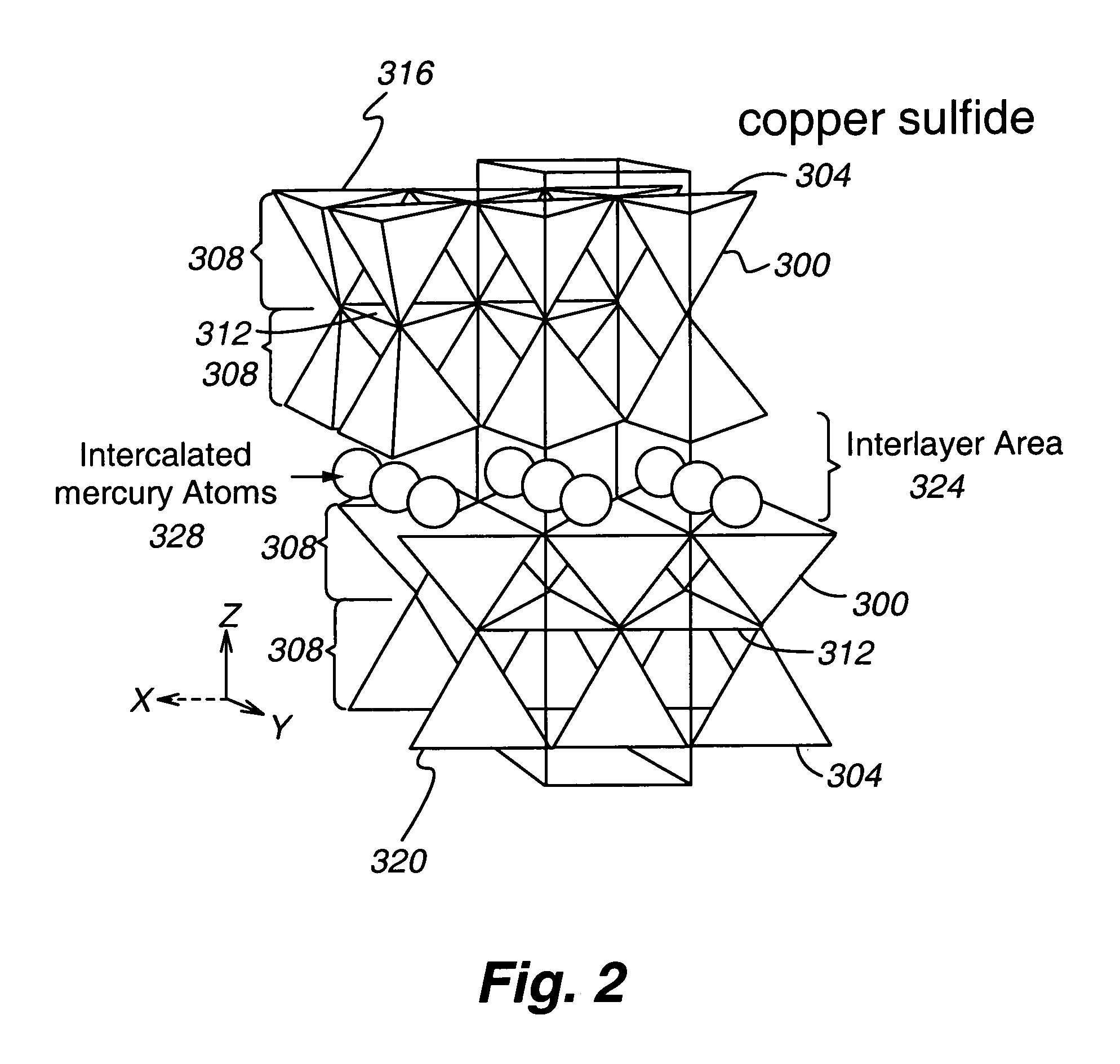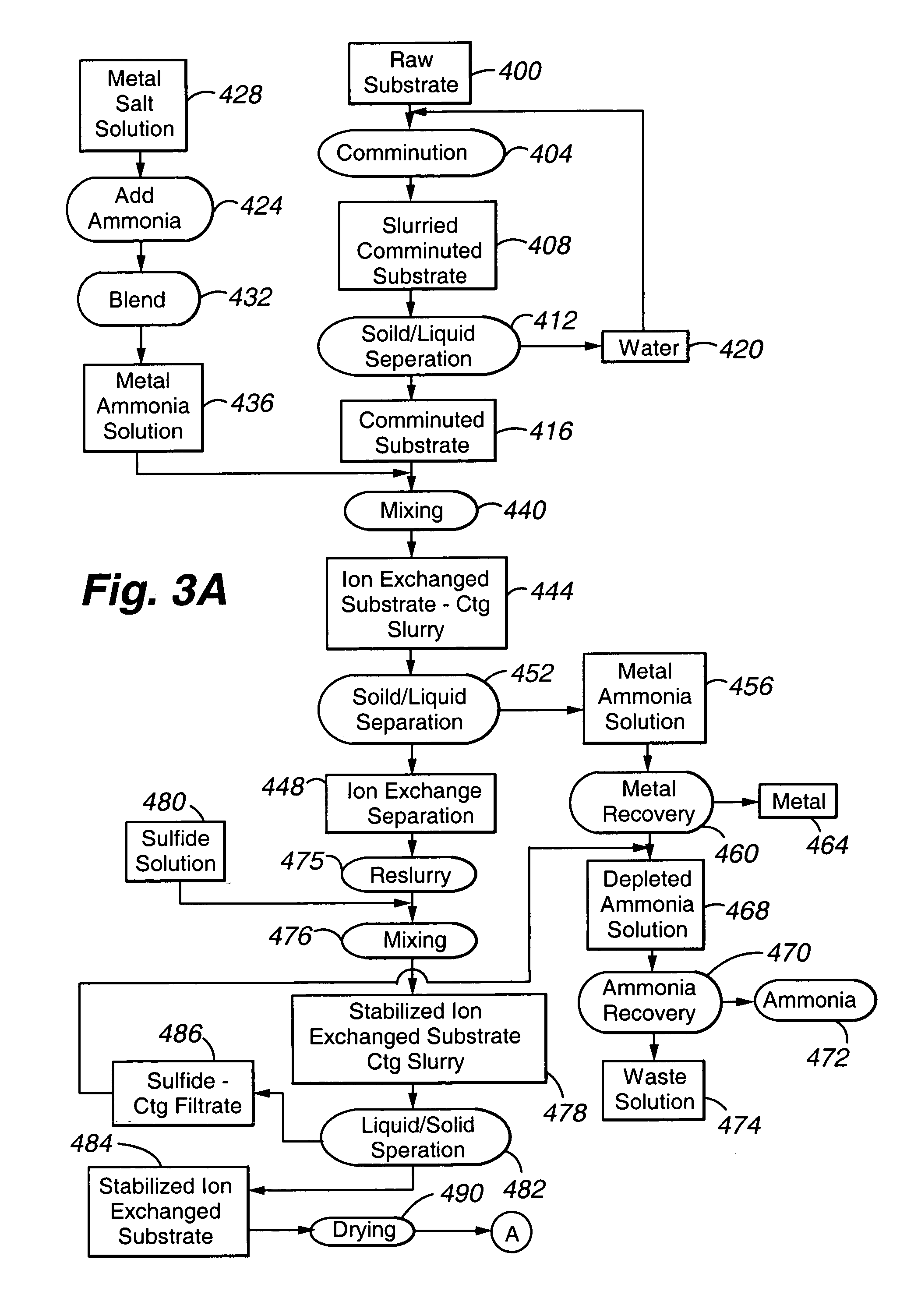Chemically-impregnated silicate agents for mercury control
a technology of silicate agents and mercury control, which is applied in the direction of colloidal chemistry, water/sewage treatment by ion exchange, and separation processes, etc. it can solve the problems of limited effectiveness increased mercury levels in fish, and low efficiency of carbon injection for mercury control. , to achieve the effect of improving and cost-effective control, reducing unit cost and economic efficiency
- Summary
- Abstract
- Description
- Claims
- Application Information
AI Technical Summary
Benefits of technology
Problems solved by technology
Method used
Image
Examples
example 1
[0080]This Example describes preparation of several polyvalent metal sulfide-substituted sorbents of the present invention, using various amounts of cuprammonium ion for substitution.
[0081]All steps in all Examples (unless otherwise noted) were carried out at room temperature. All reagents are obtainable from Sigma Chemical, St. Louis, Mo.) except as noted. To a beaker, approximately 20 milliliters (mL) of copper chloride, to give a final concentration of 2%, 5%, or 10% (w / v) of copper in 100 mL, was added. Following addition of copper chloride, enough ammonium hydroxide was added to dissolve the copper chloride. Distilled deionized water was then added to bring the solution to 100 mL total. See Table 1 for further experimental details. To the prepared cuprammonium reagent, 10 g of vermiculite Palabora #4 (obtainable from Palabora, Inc. Palabora, South Africa), ground or milled to 90% less than 10 micrometers, were weighed out and placed in each beaker to form a slurry. All substrat...
example 2
[0083]This Example describes preparation of several polyvalent metal sulfide-substituted sorbents of the present invention, using various amounts of cuprammonium ion for substitution.
[0084]All steps described in Example 1 were carried out in this Example, with the exception being in the sulfide addition step. In this Example, either sodium sulfide or CASCADE (calcium polysulfide, available from BSP, Inc., Fresno, Ca) was added until the pH was above 8. The slurry was processed to completion as described in Example 1.
[0085]
TABLE 2Preparation of cuprammonium solution at 2%, 5%, and 10% copperFormulation% Copper inWeight (g) CuClMolesmlNumbersolutionadded to solutioncopperNH4OH added124.230.03110.51A24.230.03110.52510.60.0787402A510.60.07874031021.150.1574803A1021.150.157480
example 3
[0086]This Example describes preparation of several polyvalent metal sulfide-substituted sorbents of the present invention, using various amounts of cuprammonium ion for substitution.
[0087]All steps described in Example 1 were carried out in this Example, with the exception being in the sulfide addition step. In this Example, either sodium sulfide or CASCADE (calcium polysulfide, available from BSP, Inc., Fresno, Ca) was added as follows. When the amount of sulfide added was 126 mL, a final pH of 9.44 was recorded. When the amount of sulfide added was 132 mL, a final pH of 10.2 was recorded. The slurry was processed to completion as described in Example 1.
[0088]
TABLE 3Preparation of cuprammonium solution at 2%, 5%, and 10% copperFormulation% Copper inWeight (g) CuClMolesmlNumbersolutionadded to solutioncopperNH4OH added124.230.03110.51A24.230.03110.52510.60.0787402A510.60.07874031021.150.1574803A1021.150.157480
PUM
| Property | Measurement | Unit |
|---|---|---|
| pH | aaaaa | aaaaa |
| pH | aaaaa | aaaaa |
| pH | aaaaa | aaaaa |
Abstract
Description
Claims
Application Information
 Login to View More
Login to View More - R&D
- Intellectual Property
- Life Sciences
- Materials
- Tech Scout
- Unparalleled Data Quality
- Higher Quality Content
- 60% Fewer Hallucinations
Browse by: Latest US Patents, China's latest patents, Technical Efficacy Thesaurus, Application Domain, Technology Topic, Popular Technical Reports.
© 2025 PatSnap. All rights reserved.Legal|Privacy policy|Modern Slavery Act Transparency Statement|Sitemap|About US| Contact US: help@patsnap.com



